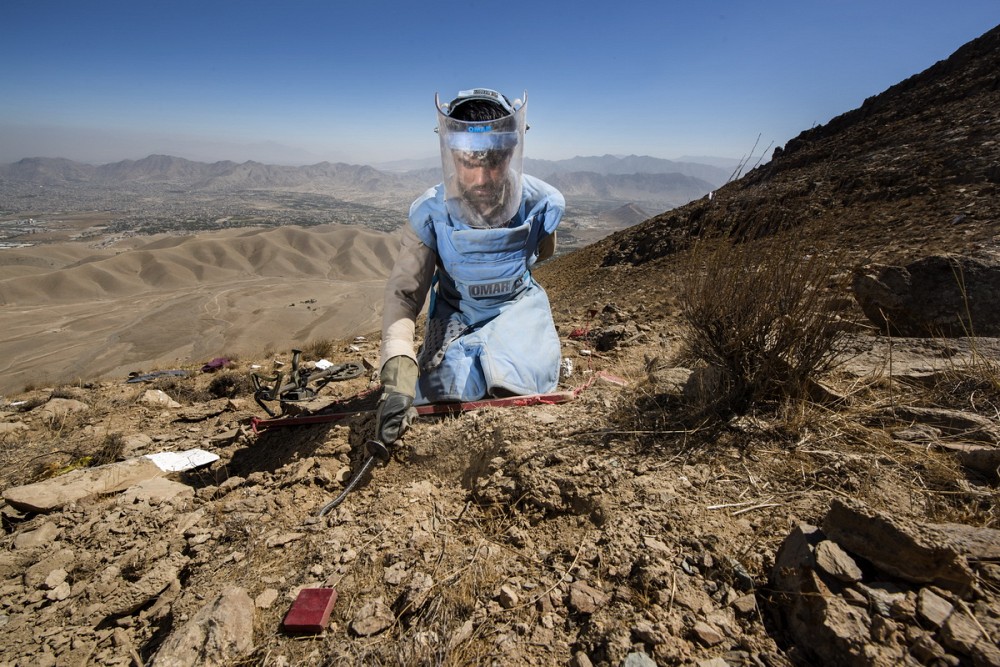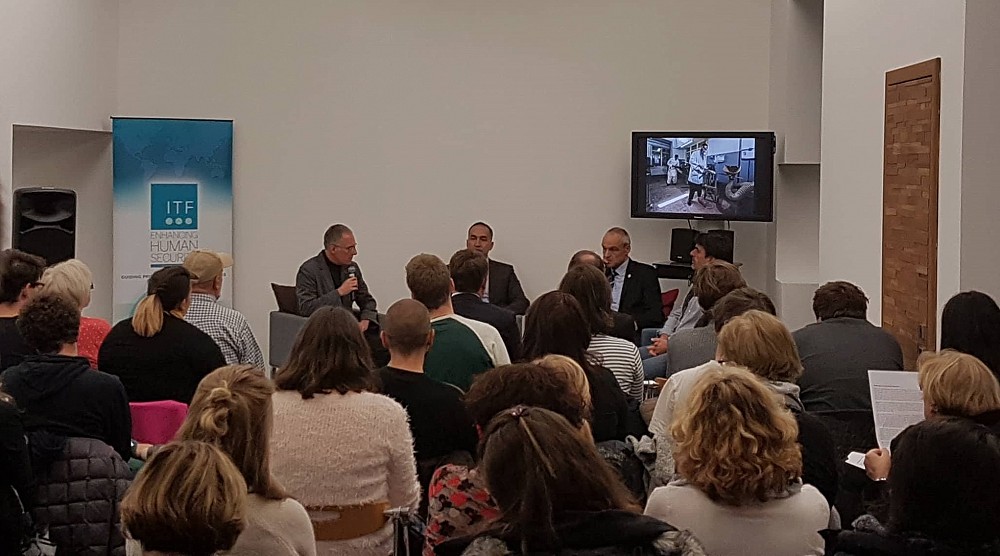Silent Killers of Afghanistan Exhibition is Open!
ITF and Arne Hodalič, a world-renowned photographer, designed an exhibition Silent Killers of Afghanistan, which portrays the brutality of mine contamination in modern Afghanistan and the bravery of those trying to resolve it.

At the opening on Monday, 13 November 2017, Mohammad Shafiq Yosufi, Director of Afghanistan Directorate for Mine Action Coordination, Arne Hodalič, Author of the Exhibition, and Roman Turšič, Head of ITF Implementation Office in Afghanistan exchanged their views and hands on experience directly from the field.

Even though 79 percent of its minefields have already been cleared, Afghanistan remains among the countries most contaminated with mines and explosive remnants of war (ERW) in the world. Currently, the 3,651 recorded mine/ERW hazardous areas cover 576.6 km2 and directly affect 1,461 communities in 32 (out of 34) Afghan provinces. With the on-going conflict, there is a constant possibility that the extent of contamination will worsen. Hazardous areas threaten human lives, while at the same time they prevent the deliveries of humanitarian aid, obstruct access to educational and health institutions, and inhibit the use of already barren land.
Mine Action Programme in Afghanistan (MAPA) has been implementing mine action projects for 27 years. Throughout this period, much has been achieved; 25,224 hazardous areas have been cleared and 3,014 km2 of land have been released. Through MAPA, 18 million items of UXO, 1.2 million antipersonnel mines, almost 61,000 antitank mines and 752 abandoned improvised explosive devices (IED) have also been destroyed.
Despite significant achievements, conventional landmines, pressure-plate improvised explosive devices (PPIED) and other ERW to date killed or injured over 30,000 people and today still cause around 160 victims per month.
ITF Enhancing Human Security opened its Implementing Office in Afghanistan in 2014, following years of occasional cooperation with the local authorities, in order to address the consequences of mine contamination. With the purpose of enhancing Afghan capacities in this field, ITF supports the development and functioning of the Afghanistan Directorate for Mine Action Coordination and the Mine Detection Center Polyclinic in Kabul, which provides the much needed healthcare to the poorest inhabitants of Kabul.
Arne Hodalič travelled to Afghanistan in September 2017 at the invitation of ITF. He captured everyday life of mine victims, demining teams and consequences that explosives leave behind. The award-winning photographer is one of the most recognizable Slovenian photographers, who publishes his photographs in some of the most important printed Slovenian and international media, participates in expeditions around the world, is the author of several exhibitions, monographies and manuals, a professor, and editor of photography at National Geographic Slovenia.
We welcome you to visit the Silent Killers of Afghanistan exhibition, which will be on view until 31 December 2017 at Slovene Ethnographic Museum.